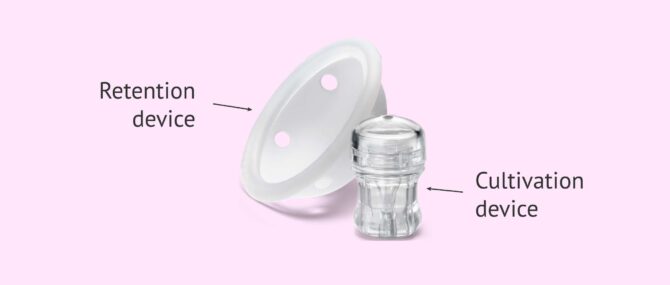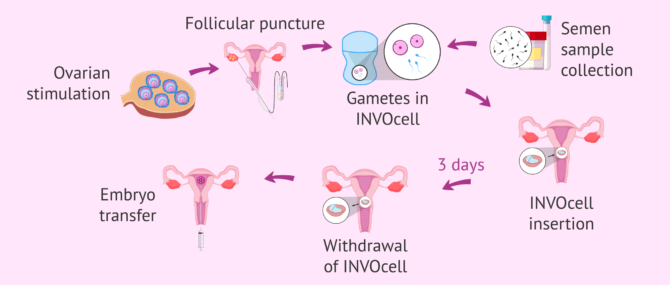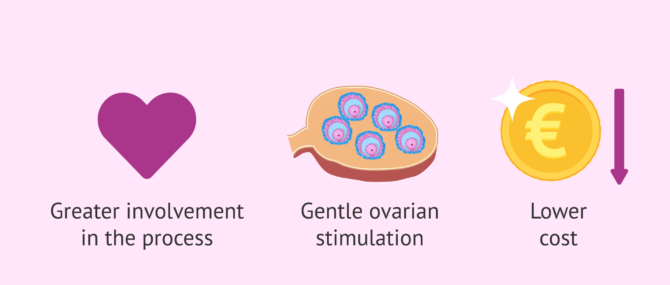INVOcell or INVO is an intravaginal culture system that can be used in assisted reproduction treatments. The novelty of this method is that it allows fertilization and the beginning of embryo development to occur inside the woman's body.
This characteristic of INVOcell means that it has certain advantages, but also certain disadvantages such as the inability to evaluate whether correct fertilization has occurred. In any case, the INVO method has not been incorporated into the routine practice of many assisted reproduction centers.
Provided below is an index with the 8 points we are going to expand on in this article.
- 1.
- 1.1.
- 2.
- 3.
- 3.1.
- 3.2.
- 4.
- 5.
- 5.1.
- 5.2.
- 5.3.
- 6.
- 7.
- 8.
What is INVOcell?
It is a device in which the eggs are deposited together with the spermatozoa and then introduced into the woman's vagina. Thus, fertilization and the early stages of embryo development will take place in INVOcell, which is located inside the patient's body, rather than in an incubator in the laboratory.
The INVOcell system consists of two parts:
- Culture device: consists of an internal vessel where the gametes (eggs and spermatozoa) will be introduced and an external cover.
- Retention device, so that the culture device is retained inside the vagina.
Both devices will be inserted into the woman's vaginal canal, where they must remain for 3 days.
How does INVO work?
The initial phases of the INVO method are similar to those of conventional IVF.
First, a gentle ovarian stimulation will be performed to develop a moderate number of ovarian follicles (up to 7 oocytes can be introduced into the device). Follicular puncture is then scheduled to obtain the oocytes.
Ovarian stimulation and follicular puncture would not be necessary for the patient if donor eggs are used.
Next, the semen sample is obtained and prepared. The spermatozoa are incorporated together with the oocytes into the culture device.
Finally, the specialist inserts the culture and retention devices into the patient's vagina, where they will remain for three days. Fertilization and the first embryonic divisions will occur during this period.
After this time, it is necessary for the gynecologist to remove the devices. In this way, it will be possible to evaluate the number of embryos that have developed and choose which one or ones will be transferred to the uterus. However, leftover embryos can be vitrified for later transfer.
Precautions
First of all, it is important for the woman to consult with the specialist if she has vaginitis, a history of toxic shock syndrome or pelvic surgery before undergoing this technique.
While the INVOcell system is inside the vagina, the patient must take into account a series of precautions such as the following:
- Do not have sexual relations.
- No bathing or swimming.
- Do not perform intense physical activity.
- Do not use vaginal douches, saunas...
Keeping these recommendations in mind is important, as the device in the vagina provides the right conditions for embryonic development to occur. Therefore, any change in the temperature of the vagina that could affect the outcome of the procedure should be avoided. In addition, the doctor should explain to the patient how to proceed in order to act quickly if INVOcell moves or comes out of the vagina.
Advantages and disadvantages of INVOcell
This procedure avoids the incubation of embryos in the laboratory. Related to this, INVOcell offers advantages and disadvantages as mentioned below.
Advantages of INVOcell
The INVO technique was developed with the purpose of offering patients a series of advantages such as the following:
- It allows the woman to be more involved in the assisted reproduction process and can be an option when conventional IVF is not accepted for ethical, religious or cultural reasons.
- It is performed with gentle ovarian stimulation.
- It may be less expensive than traditional IVF.
However, this last advantage over its price is more controversial and the cost will depend on the fertility clinic.
Disadvantages of INVOcell
Despite the advantages described above, it is important to know that the INVO method also has certain disadvantages:
- It involves lodging the device for 3 days in the vagina.
- It prevents embryologists from assessing whether fertilization has occurred correctly since they will directly evaluate the embryos. This may result in the transfer of embryos with chromosomal alterations.
Perhaps the great importance of this last drawback is what has prevented INVOcell from achieving greater popularity.
Comparison between INVO and conventional IVF
The main difference between the INVO method and conventional IVF is that the embryos will be cultured inside the mother instead of in an incubator in the laboratory.
The initial steps of the treatment are the same in both cases since there is the possibility of conventional IVF with gentle stimulation and both techniques require ovarian puncture. The last stages of the process are also identical to the INVO method and conventional IVF, i.e. in both cases embryo transfer and vitrification of supernumerary embryos are performed.
Assisted procreation, as any other medical treatment, requires that you rely on the professionalism of the doctors and staff of the clinic you choose. Obviously, each clinic is different. Get now your Fertility Report, which will select several clinics for you out of the pool of clinics that meet our strict quality criteria. Moreover, it will offer you a comparison between the fees and conditions each clinic offers in order for you to make a well informed choice.
Regarding embryo development, as we mentioned before, in the INVO method it is not possible to assess whether correct fertilization has occurred and this may involve associated risks. In the case of conventional IVF, the fertilized oocytes are in the laboratory and can be evaluated by an embryologist.
On the other hand, some studies seem to suggest that INVO offers acceptable results, even comparable to conventional IVF. However, there are few studies on the subject that allow a clear conclusion to be drawn.
FAQs from users
Is it uncomfortable to wear INVOcell in the vagina?
The INVOcell device should not cause discomfort to the woman while it is inserted in the vagina. In addition, any discomfort, bleeding or other symptoms that cause concern should be reported to your gynecologist as soon as possible.
What are the indications for the INVO method?
The INVO method has similar indications to conventional IVF, since the techniques are similar and only differ in where the embryos are incubated.
However, if the indicated technique is ICSI, the microinjection can be performed in the laboratory and the already fertilized eggs can be introduced into the INVOcell.
Can eggs be fertilized by ICSI and INVO method?
Yes, it is possible to introduce in INVOcell up to 7 oocytes that have already been fertilized in the laboratory by ICSI. In this way, they will remain in culture during the first stages of embryonic development inside the patient's vagina.
The device will subsequently have to be removed after 3 days to see the number and quality of the embryos that have developed, in the same way as in the conventional INVO method. Finally, the embryo transfer to the uterus or its vitrification would be performed.
Recommended readings
If you want to learn more about IVF, you can visit the following link: How is the IVF process step by step?
If, on the other hand, you are interested in how embryo culture is performed, we recommend you to read the following article: Embryo culture in the in vitro fertilization laboratory (IVF)
We make a great effort to provide you with the highest quality information.
🙏 Please share this article if you liked it. 💜💜 You help us continue!
References
Doody KJ, Broome EJ, Doody KM. Comparing blastocyst quality and live birth rates of intravaginal culture using INVOcell™ to traditional in vitro incubation in a randomized open-label prospective controlled trial. J Assist Reprod Genet. 2016 Apr;33(4):495-500.
García-Ferreyra J, Hilario R, Luna D, Villegas L, Romero R, Zavala P, Dueñas-Chacón J. In Vivo Culture System Using the INVOcell Device Shows Similar Pregnancy and Implantation Rates to Those Obtained from In Vivo Culture System in ICSI Procedures. Clin Med Insights Reprod Health. 2015 Jun 10;9:7-11.
Lucena E, Saa AM, Navarro DE, Pulido C, Lombana O, Moran A. INVO procedure: minimally invasive IVF as an alternative treatment option for infertile couples. ScientificWorldJournal. 2012;2012:571596.
Mitri F, Esfandiari N, Coogan-Prewer J, Chang P, Bentov Y, McNaught J, Klement AH, Casper RF. A pilot study to evaluate a device for the intravaginal culture of embryos. Reprod Biomed Online. 2015 Dec;31(6):732-8.
FAQs from users: 'Is it uncomfortable to wear INVOcell in the vagina?', 'What are the indications for the INVO method?' and 'Can eggs be fertilized by ICSI and INVO method?'.
Author
More information about Cristina Algarra Goosman





